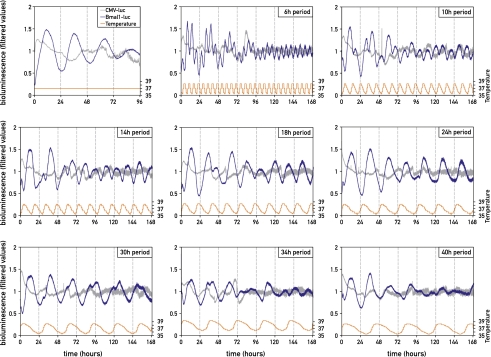Figure 5.
Circadian gene expression adapts to widely different T-cycles of simulated body temperature rhythms. NIH3T3 fibroblasts transfected with a Bmal1-luciferase reporter (blue) or a CMV-luciferase reporter (gray; used as a noncircadian control) were kept in constant temperature (first panel) or were exposed to temperature T-cycles of 35.5°C–38.5°C with period lengths of 6, 10, 14, 18, 24, 30, 34, or 40 h (as indicated). All bioluminescence data were filtered by moving average transformation.

